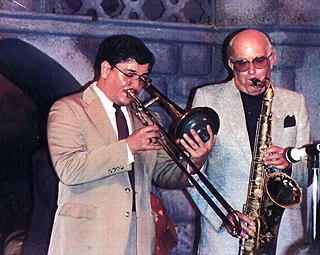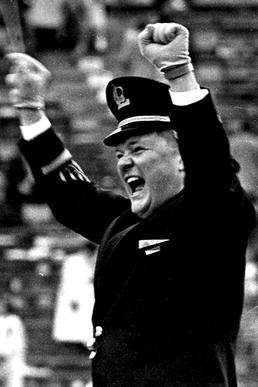Related Research Articles

Robert Clark Seger is a retired American singer, songwriter, and musician. As a locally successful Detroit-area artist, he performed and recorded as Bob Seger and the Last Heard and the Bob Seger System throughout the 1960s, breaking through with his first album, Ramblin' Gamblin' Man in 1969. By the early 1970s, he had dropped the 'System' from his recordings and continued to strive for broader success with various other bands. In 1973, he put together the Silver Bullet Band, with a group of Detroit-area musicians, with whom he became most successful on the national level with the album Live Bullet (1976), recorded live with the Silver Bullet Band in 1975 at Cobo Hall in Detroit, Michigan. In 1976, he achieved a national breakout with the studio album Night Moves. On his studio albums, he also worked extensively with the Alabama-based Muscle Shoals Rhythm Section, which appeared on several of Seger's best-selling singles and albums.

"The Great Rock Island Route", popularized as "Wabash Cannonball" and various other titles, is a 19th-century American folk song that describes the scenic beauty and predicaments of a fictional train, the Wabash Cannonball Express, as it traveled on the Great Rock Island Railroad. The song has become a country music staple and common marching band repertoire. The only train to actually bear the name was created in response to the song's popularity, the Wabash Railroad renaming its daytime express service between Detroit and St. Louis the Wabash Cannon Ball from 1949 until discontinuation during the formation of Amtrak in 1971.

Dick Siegel is an American singer-songwriter, guitarist, and visual artist. A long-time resident of Ann Arbor, Michigan—where he graduated from the University of Michigan in 1971—Siegel's debut album SNAP! appeared in 1980, featuring the song "Angelo's," a fan favorite celebrating an iconic local breakfast spot. He won the Best New Folk Artist award at the 1991 Kerrville Folk Festival as well as awards at the Napa Valley Songwriting Festival for his songs "What Would Brando Do?" and "Angels Aweigh." Multiple Detroit Music Awards led to his induction in the Detroit Music Hall of Fame.

"The Victors" is the fight song of the University of Michigan. Michigan student Louis Elbel wrote the song in 1898 after the football team's victory over the University of Chicago, which clinched an undefeated season and the Western Conference championship.
"Mighty Oregon" is the fight song for the University of Oregon. It is played by the Oregon Marching Band at home football and basketball games. Director of Bands, Albert Perfect, along with journalism student DeWitt Gilbert, wrote the fight song, "The Mighty Oregon March", which was first performed on March 4, 1916. For the song's most popular section, Perfect fashioned a new melody to fit into the harmony from "It's a Long Way to Tipperary", a hit 1912 World War I march. The catchy popularity of the harmony was not lost on Perfect, a man well-educated in music theory, who originally subtitled the song "The Tipperary of the West." Over the years there have been several changes to the lyrics and, today, the middle stanza is generally the only one sung and it is done so using more modern lyrics than the original.
"Victory for MSU", formerly "MSU Fight Song", is the official fight song of Michigan State University. It was created in early 1915, when MSU was known as Michigan Agricultural College (M.A.C.). An MSU cheerleader, Francis Irving Lankey, along with lyricist Arthur Sayles, created the song. With several changes noted below, the school has used the same song ever since. The MSU Fight Song is played at all university sporting events and is frequently sung by students and alumni.

The Spartan Marching Band (SMB) is the marching band of Michigan State University. The band has over 300 members and was founded in 1870. Notable music educator Leonard Falcone directed the band from 1927 through 1967.

The Michigan Marching Band is the official marching band of the University of Michigan. The band performs at all Michigan Wolverines football home games, select away games, and numerous concerts, pep rallies, and parades. As a student musical ensemble, the MMB evolved from the original Michigan Band of twenty-two players in 1896 to today's band of over 400 members.

"Carmen Ohio" is the oldest school song still used by Ohio State University. The song was composed by freshman athlete and Men's Glee Club member Fred Cornell in 1902 or 1903. According to some accounts, he composed it on the train ride home from Ann Arbor, Michigan after Ohio State suffered an 86-0 loss to the Michigan Wolverines. The song is set to the tune of "Spanish Hymn", or "Spanish Chant". The Men's Glee Club first performed it in 1903; however, it did not gain popularity until after its publication in The Lantern on October 10, 1906. At the following Ohio State–Michigan football game on October 20, 1906, "Carmen Ohio" was published in the program. In 1915, Cornell recalled that he wrote the song in 1903 at the request of the Men's Glee Club, and other family members later stated that the train story might be an exaggeration or outright fabrication. Currently, after every home football game in Ohio Stadium, win or lose, the football team and the crowd sing the first verse of Carmen Ohio, accompanied by The Ohio State University Marching Band. It is also sung by new graduates at the end of the university's commencement ceremonies, after diplomas are distributed.

Dan Barrett is an American arranger, cornetist, and trombonist.

The Yellow and Blue is the alma mater of the University of Michigan, written by Charles M. Gayley. An 1878 graduate, Gayley composed the lyrics in 1886 while he was a professor of English and Latin at UM. He was motivated to write the song in hopes of winning a $20 prize from the student editors of the yearbook. As he wrote the lyrics, Gayley was thinking of the school colors, "azure blue and maize." Ultimately, the song became a paean to the color and light of late summer in Michigan: the yellow grain in the fields, the yellow harvest moon, the varying blues of the sky at morning and sunset. These "ribbons that nature has spun" reminded him, too, of "the maid of the golden hair, and eyes that are brimming with blue."
On, On, U of K, also punctuated as "On! On! U of K", is a fight song at the University of Kentucky. Although it is primarily associated with the historically successful Kentucky Wildcats men's basketball program, the lyrics are actually specific to football. Aside from this song, the school is rarely referred to as "U of K" but simply as "UK."

Thomas Tyra was an American composer, arranger, bandmaster, and music educator.

"Hail to Pitt" is the most traditional fight song of the University of Pittsburgh, which is commonly referred to as Pitt. The saying "Hail to Pitt!" is also the most traditional and commonly used slogan of the University of Pittsburgh and its athletics teams. The slogan is frequently used in promotional material, printed on merchandise and souvenirs. It was also the title of a 1982 history of Pitt athletics by author Jim O'Brien. The slogan is often used among alumni as a statement of affiliation, including as a closing signature in conversation or correspondence between alumni, and is sometime abbreviated as "HTP" or "H2P", the latter of which is a registered trademark of the university and is frequently used on official university signage and merchandise.

"The Orange and Blue" is the traditional fight song of the Florida Gators intercollegiate sports teams of the University of Florida in Gainesville, Florida.

The 1900 Michigan Wolverines football team was an American football team that represented the University of Michigan in the 1900 Western Conference football season. In their first and only season under head coach Langdon Lea, the team compiled a 7–2–1 record, finished fourth in the Western Conference, and outscored opponents by a total of 117 to 55. Michigan opened the season with six wins, but went 1–2–1 in the final four games, including losses to Iowa and Chicago.

The History of Michigan Wolverines football in the early years covers the history of the University of Michigan Wolverines football program from its formation in the 1870s through the hiring of Fielding H. Yost prior to the 1901 season. Michigan was independent of any conference until 1896 when it became one of the founding members of the Western Conference. The team played its home games at the Washtenaw County Fairgrounds from 1883 to 1892 and then at Regents Field starting in 1893.
"We Don't Give a Damn" is a song long associated with opponents of sports teams from the American state of Michigan. Its simple lyrics, written in the first person plural, repeatedly express the indifference of its performers to the entirety of the state of Michigan and declare their place of origin to be unknown. The earliest known usage of the song was in the 1890s by alumni of Cornell University. It has also been used in a variety of contexts by baseball and football fans from Chicago, Minnesota, Ohio, North Carolina, and Tennessee.

"Varsity" is a fight song of the University of Michigan.

George Rudolph Cavender Jr. was an American music educator and director best known for his association with the University of Michigan, where he led the university's bands, including the Michigan Marching Band, from 1952 until 1978, first as Assistant Director and then as Director. During those twenty-six years, Cavender worked closely with William Revelli to develop the Michigan Band into a globally recognized performance group.
References
- 1 2 3 4 5 6 Stieg, Bill (May 21, 1984). "A Catchy Intro to a Cheer Became Music to the Ears of Myriad Fans". Sports Illustrated . Retrieved October 22, 2015.
- 1 2 3 Moorehouse, Buddy (October 15, 1980). "Catchy 'Go Blue' Melody Was Invented Right Here". Michigan Daily . University of Michigan, Ann Arbor. p. 9. Retrieved March 6, 2017.
- 1 2 Smith, Leanne (January 22, 2010). "Peek Through Time: Jackson Native Albert Ahronheim Gave U-M Football Fans the Halftime of Their Lives". Ann Arbor News . Retrieved October 22, 2015.
- ↑ "Best Potvin Sucks Whistle Ever!". YouTube .